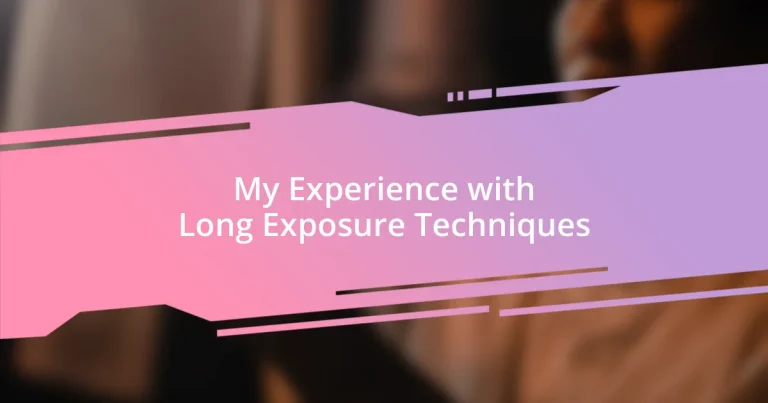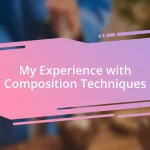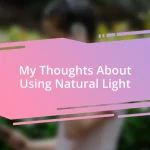Key takeaways:
- Long exposure photography captures motion and transforms scenes into ethereal works of art through slow shutter speeds.
- Key camera settings for long exposure include using low ISO (100), slower shutter speeds (1 second or longer), a mid-range aperture (f/8 to f/16), and manual focus, while always using a sturdy tripod for stability.
- Post-processing techniques like adjusting contrast, removing distractions, and playing with color tones significantly enhance the final image, allowing for creative expression.
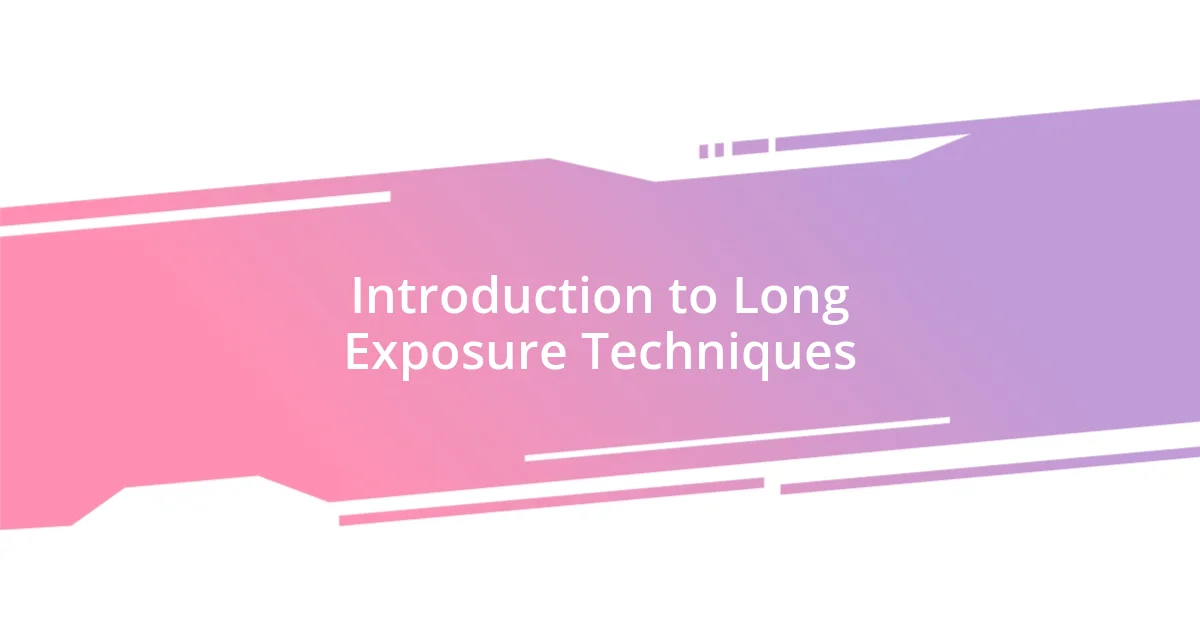
Introduction to Long Exposure Techniques
Long exposure techniques are fascinating ways to capture the world around us in a truly unique light. I still remember my first attempt at shooting the stars; I was both anxious and excited, peering into my camera for a magical glimpse of the night sky. What I discovered was a whole new realm of photography, where time feels stretched, and every moment is threaded together beautifully.
These techniques involve using slow shutter speeds to create dreamy, ethereal images, transforming everyday scenes into captivating pieces of art. I once stood at a waterfall for what felt like hours, watching the water transform into silky strands. It was a humbling experience that ignited a passion within me for exploring the nuances of light and movement.
Have you ever thought about how time can be visually represented? I invite you to think about that as we dive deeper. Long exposure challenges us to rethink how we perceive motion; it’s not just about freezing moments, but about embracing the flow of time itself. Each shot is an interpretation, and there’s something deeply satisfying about capturing the world in a way most people never get to see.
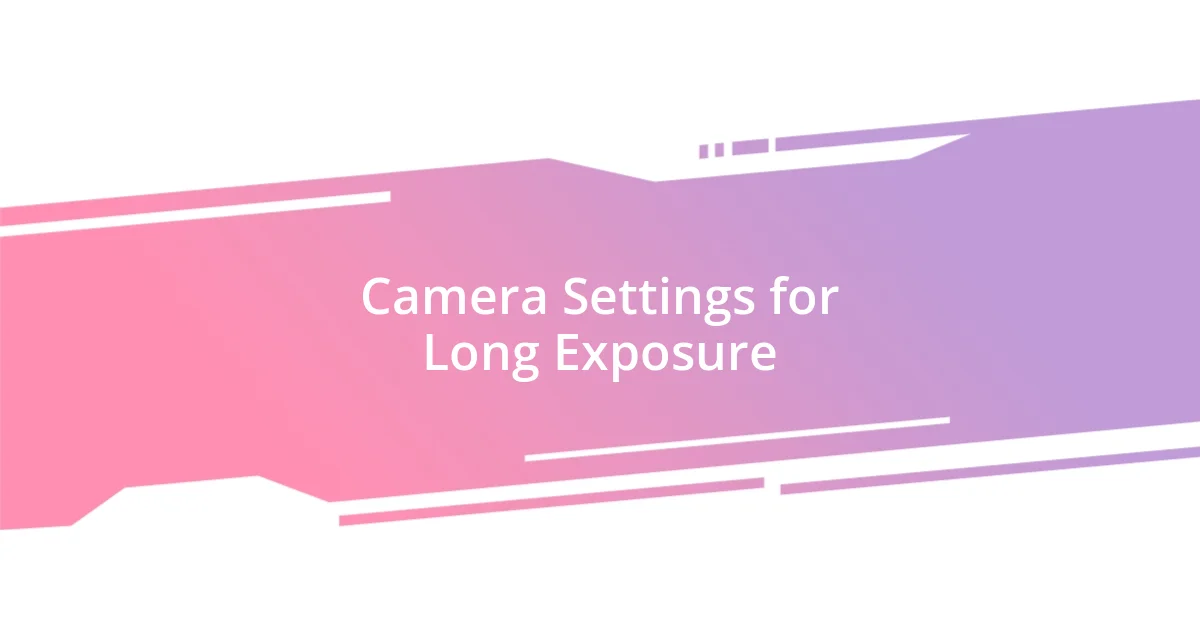
Camera Settings for Long Exposure
When it comes to long exposure photography, getting the camera settings just right is crucial. I remember standing by a serene lake during golden hour, setting my camera to a low ISO of 100 to maintain image clarity and prevent noise. The tranquility of the location, paired with the right settings, made the sunset reflections on the water truly mesmerizing.
Here are some key camera settings to consider for long exposure:
- Shutter Speed: Start with slower speeds, typically 1 second or longer, to capture movement. I often experiment with exposures of 15 seconds to a minute.
- Aperture: A mid-range aperture (like f/8 to f/16) helps achieve a sharp focus across the scene, which I find essential, especially in landscape shots.
- ISO: Keep it low (around 100 or 200) to reduce noise, allowing the image to be cleaner. This is especially important in low-light situations.
- Focus: Manual focus is my go-to; I prefer to set it before starting my exposure which often avoids focusing issues during long captures.
- Tripod: Always use a sturdy tripod to keep the camera stable. On one occasion, even the slightest breeze created ripples in my waterfall shots, reminding me of the importance of stability.
These settings, combined with a bit of patience, can lead to astonishing results, creating tranquil scenes that evoke emotion and narrate stories through light and time.
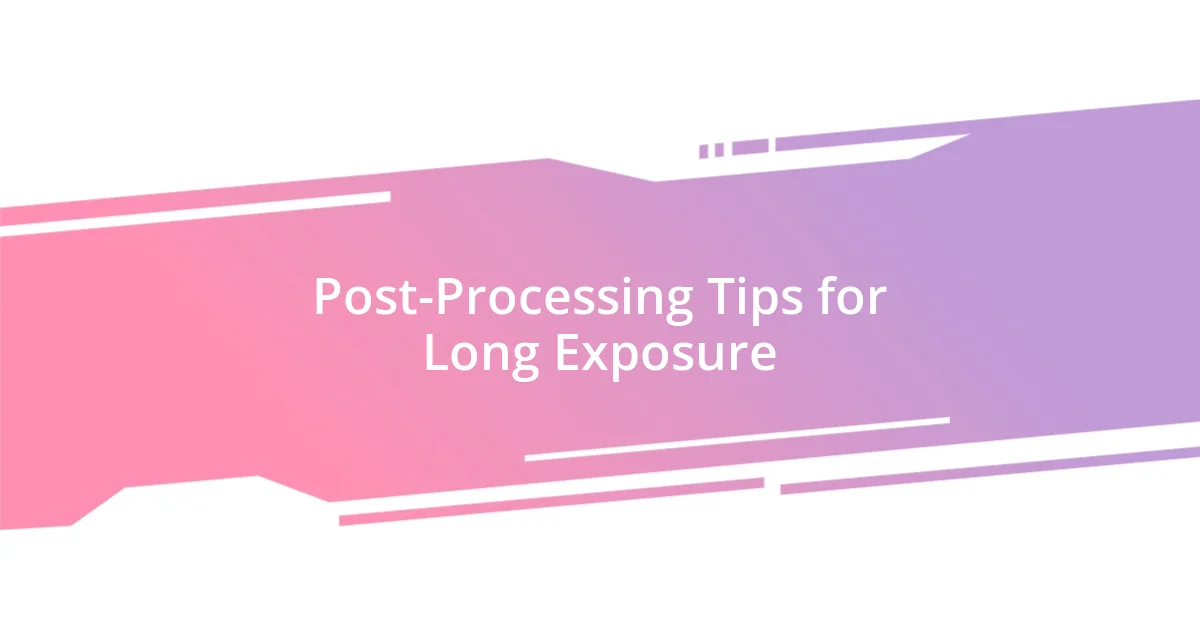
Post-Processing Tips for Long Exposure
When I dive into post-processing my long exposure shots, I find that a little extra care can transform an already stunning image into a breathtaking piece of art. For instance, I often start by adjusting the contrast and clarity; I remember one particularly foggy morning by the coast where enhancing these settings brought out the delicate textures of the mist swirling around the rocks. Have you ever felt that a little tweak here and there truly unveils the hidden beauty of a scene?
Another essential step I can’t overlook is cleaning up any unwanted distractions in my composition. I vividly recall a long exposure shot where a stray branch unexpectedly ruined the serene vibe I aimed for – I quickly used the healing brush tool to remove it. It’s moments like these that make me appreciate the power of software; it’s not just about capturing beauty but also creating it.
Don’t forget to play with color tones, too. I often warm up the hues in my photos to evoke a more inviting atmosphere. Just the other day, I applied a golden filter to a twilight long exposure, and the result was mesmerizing, as if the sun had never truly set. There’s something magical about fine-tuning an image to convey the emotions I felt in that moment; it truly brings my vision to life.












